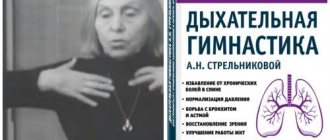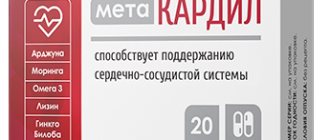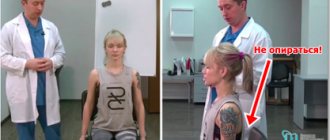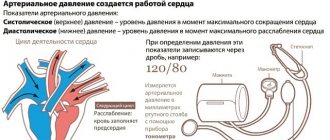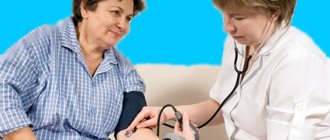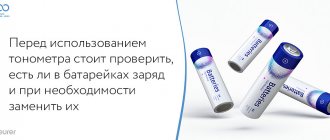Currently, arrhythmias are quite common. There are frequent cases of their combination with hypotension (low blood pressure), which aggravates the condition of patients and requires an integrated approach to diagnosis and treatment. It is important to understand that there are a large number of different types and forms of arrhythmias that have completely different causes. Any disruption of the heart is a serious symptom; they can be classified as so-called “red signs”, especially if we are talking about an acute arrhythmia, which is accompanied by a decrease in blood pressure. Therefore, the answer to the question: “I have arrhythmia and low blood pressure, what should I do?” – there will be a timely request for help from a specialist: family doctor, therapist, cardiologist.
Self-administration of drugs that affect the heart rhythm can lead to even more serious disorders, worsening heart failure and even death.
Reasons for lowering blood pressure during arrhythmias
Arrhythmia is a condition in which the normal functioning of the heart is disrupted. In this case, the heart rate may change; depending on this, tachyarrhythmias (with an increase in the number of heartbeats) and bradyarrhythmias (with a decrease in heart rate) are distinguished. In other cases, the process of cardiac contraction itself suffers: it proceeds incorrectly, which entails impaired blood circulation through the chambers of the heart, a decrease in cardiac output and minute volume of blood circulation. There are also cases of distortion of the act of contraction in combination with changes in heart rate.
Blood pressure is directly proportional to heart rate, the tone of the vascular walls, and minute volume of blood circulation (the product of cardiac output per contraction per heart rate). Thus, blood pressure directly depends on the etiological factor of the arrhythmia itself.
Causes of arrhythmias with hypotension:
- frequent stress;
- bad habits (smoking, alcohol, taking drugs);
- overwork and excessive physical activity;
- sleep disorders;
- avitaminosis;
- pregnancy;
- taking medications that affect heart rhythm;
- inflammatory processes in the cardiovascular system;
- imbalance of basic electrolytes in blood plasma;
- diseases of the thyroid gland (thyrotoxicosis, hypothyroidism);
- disruption of the adrenal cortex;
- osteochondrosis changes in the cervical spine;
- hypoglycemic conditions and others.
Here are the most common causes of arrhythmias and hypotension. There are paroxysmal arrhythmias, which take a very short period of time and occur in the form of attacks.
Medications
To prescribe effective treatment for arrhythmia and low blood pressure, it is necessary to find out their root cause. If the diseases are caused by pathologies of the autonomic nervous system or constant stress, then sedatives are prescribed. If the disease is organic in nature, then tranquilizers are more effective than conventional sedatives. But they are taken under the strict supervision of a doctor, in a hospital.
Attention! In total, there are three groups of drugs that are prescribed by a cardiologist to normalize heart rhythm and blood pressure.
Sedatives
The peculiarity of sedatives is that they can be used without a doctor’s prescription for preventive purposes. With the help of sedatives, blood pressure is normalized and heart rhythm is restored. Attacks of insomnia cease to bother you, and general emotional tension is relieved.
After using sedatives, nervousness is slightly reduced, without dependence or drowsiness.
Sedatives have a combined composition. Among the components: bromides, herbal medicinal preparations and barbiturates. As already noted, the most popular sedatives for low blood pressure and heart rhythm disturbances are motherwort and valerian.
These sedatives are used for preventive purposes to relieve emotional stress. To do this, motherwort is taken 30-50 drops with 50 ml of plain water. It is undesirable to take such drugs if a person does not experience obvious discomfort.
Tranquilizers
If a person is intolerant to antiarrhythmic drugs, then treatment is carried out using tranquilizers. They are used to restore heart rhythm. Tranquilizers differ from sedatives in that they lower blood pressure and reduce heart rate during tachycardia.
The use and dosage of tranquilizers is only as prescribed by the attending physician. Among the drugs used are Diazepam, Elenium and Phenazepam. If pathological changes in the heart cause a rhythm disturbance, then, in addition to relieving the arrhythmia, you need to treat the underlying disease. A competent doctor, as a rule, will be able to reduce the dosage while still leaving the therapy effective.
Read also: Drug therapy for cardiac arrhythmia: prescriptions for bradycardia
Antiarrhythmic
A group of these drugs are used to normalize heart rhythm. In this case, antiarrhythmic drugs will not be prescribed if the patient needs to relieve pain or reduce the likelihood of recurrence of arrhythmia. With the help of antiarrhythmic drugs, the conductivity of the heart muscle is improved and metabolic processes are restored.
Typically, the following antiarrhythmic drugs are prescribed:
- Aymalin.
- Ethacizin.
- Pulse norm.
- Novocainamide.
- Quinidine.
- Rhythmonorm.
In this case, the attending physician selects the drug and dosage, assessing the severity of the disease. All instructions and prescriptions of the cardiologist or arrhythmologist must be followed in full. To maintain effectiveness, do not stop taking it prematurely or reduce the dose. Because in this case the risk of relapse increases.
Normal heart rate and blood pressure
A normal heart rate is between 60 and 80 beats per minute. Anything more is called tachycardia, and if the heart rate is below 60 beats per minute - bradycardia. It is worth noting that a slower heart rate can be observed in athletes, and this is a variant of the norm.
Normal blood pressure values for systolic are 100-130 mmHg, for diastolic – 65-85 mmHg. Hypotension is a blood pressure below 100/60 mmHg. However, there may be individual characteristics, for example, in short people, normal blood pressure can be in the range of 100-105/60 mmHg. and for them this will be a variant of the norm.
Symptoms
Patients with hypotension due to arrhythmias present with a variety of complaints. They are worried about lethargy, fatigue, dizziness, tinnitus, darkening of the eyes, and intense headache. Some experience fainting and loss of consciousness, especially when changing body position, standing up suddenly, and so on.
Hypotonic people react very sensitively to changes in weather conditions, feel strong sweating on the palms of their hands, and their joints may also hurt.
From the side of the heart, patients feel interruptions in its work, palpitations. There may be pain in the area of the heart that is pressing, squeezing, or pulling. They can last for several days. Specific to this pain syndrome is that there is no effect from taking nitroglycerin. On the contrary, its use can aggravate heart pain.
The pain of hypotension with arrhythmia does not increase with physical activity, and in some people the condition improves after increasing activity.
Arrhythmia at low pressure can cause shortness of breath and heart failure. It often manifests itself in the form of edema (of the lower third of the legs). Arrhythmia and hypotension due to myocardial infarction will cause acute circulatory failure, leading to pulmonary edema and possible death.
What to do
The patient is able to help himself even before the ambulance arrives. What kind of help you should give yourself depends on what exactly the patient feels.
With paroxysmal tachyarrhythmia, the patient notices a sharp attack with an increase in heart rate.
It is important to know how to reduce your heart rate. In this case, you should start with specific tests:
- Aschner's test (pressure on the eyeballs);
- Valsalva maneuver (otherwise called a straining test, the patient does this procedure several times);
- pressing on the upper abdomen (to stimulate the solar plexus, which activates the parasympathetic nervous system).
Let's take drugs such as Corvalol, Valocordin. These drugs slow your heart rate. If the attack is accompanied by a feeling of fear, it is better to give preference to Barboval.
If the patient is fixed on his complaints, has any psycho-emotional disorders, it is rational to use sedatives such as valerian tincture.
This and other forms of arrhythmias often develop in people who abuse loop diuretics: Furosemide, Torasemide, Lasix. They gradually reduce the concentration of potassium in the blood, which can cause arrhythmia. Therefore, the patient should take a Panangin or Asparkam tablet before the ambulance arrives, which can somehow compensate for the concentration of reduced potassium.
In case of a clear drop in heart rate and hypotension, you can take a caffeine tablet or citramon. In addition, Zelenin tincture is widely used in such cases.
Arrhythmia and hypertension - symptoms
High blood pressure is often accompanied by heart rhythm disturbances. This happens because the circulation of a large volume of blood causes an increase in the volume of the ventricles. Therefore, with hypertension, the heartbeat rhythm is also disrupted.
The occurrence of arrhythmia and hypertension can be associated with complications of paroxysmal tachycardia. Additional foci of nerve impulses cause untimely contractions of the heart muscle. The impulses can cause a temporary stop of cardiac activity, turning into strong heartbeats.
If arrhythmia is accompanied by high blood pressure, then there is a high risk of complications. Simultaneous disruption of the functioning of the heart muscle and blood vessels is a serious pathology, which indicates morphological changes in the entire cardiovascular system, leading to ventricular fibrillation.
To reduce the severity of an attack of tachycardia, you can act on the vagus nerve. You can do this yourself as follows:
- Press on the eyeballs with your thumbs.
- Massage in the area of the carotid artery.
- Induce a gag reflex.
These are simple and effective methods. If they did not help, then you need to urgently call for medical help.
Attention! With high blood pressure and atrial fibrillation, left ventricular failure develops. This leads to tachycardia and other rhythm disturbances. In some cases, a gallop rhythm appears.
General principles of treatment of arrhythmias with hypotension
General principles include normalization of work and rest schedules, correction of sleep disorders, and giving up bad habits. It is necessary to spend more time in the fresh air, have a sufficient level of physical activity, but nevertheless not overwork, avoid exposure to harmful factors on your body, and take complex vitamin preparations in the autumn-spring period. Following these rules will quickly help restore your heart rhythm at the first sign of disturbance.
Active trophic therapy is also carried out to improve the supply of nutrients and oxygen to the heart muscle and other organs. Correction of metabolic disorders is another important step in the treatment of arrhythmias and hypotension. The following medications are used for this:
- Mildronate (Metamax);
- Tivortin;
- Thiotriazolin;
- Panangin (Asparkam);
- Piracetam (Tiocetam);
- Preducted.
The remaining groups of drugs that act on the heart rhythm are prescribed solely according to indications, after a comprehensive examination by a medical specialist, and are administered under strict control, usually in an inpatient setting. Therapy with these drugs involves dynamic monitoring of the patient's condition.
Symptoms of Low Blood Pressure
Important! It is recommended to use a tonometer to measure blood pressure. If the readings of the upper and lower pressure (systolic and diastolic) are equal to 90/60 or lower, then. pressure is reduced.
Hypotension can be recognized by fainting. It is provoked by hypoxia of the brain due to stuffiness and lack of fresh air. It can be noted that people with hypotension react very strongly to humidity, air temperature and various stressful situations.
These signs are not considered definitive symptoms that confirm hypotension. If a person experiences dizziness or general weakness, this is not necessarily caused by low blood pressure. But if these signs appear frequently, these are most likely symptoms of hypotension. and therefore it is worth seeking help from a doctor.
Arrhythmia with low blood pressure
Often arrhythmia and low blood pressure go together. Why is this happening? To understand the reasons, it is worth conducting a full examination, since it is not possible to find out from the anamnesis.
Arrhythmia at low pressure occurs due to the following provoking factors:
- loss of a large amount of blood,
- state of shock
- drug intoxication,
- thyroid disease,
- vegetative-vascular dystonia.
If there is an abnormal heart rhythm and low blood pressure, the patient experiences pain in the chest and head. An attack of arrhythmia and hypotension may be accompanied by nausea. Against this background, a person develops a fear of death and dizziness.
To monitor blood pressure and heart rate, it is worth purchasing an electronic tonometer with a function for calculating these indicators. In addition, it is recommended to record the readings daily to make it easier for the doctor to assess the dynamics and prescribe the correct treatment.
For arrhythmia, medications are used to lower blood pressure and restore heart rhythm. In the case of hypotension, this causes difficulties in selecting medications. For these reasons, many medications are not suitable. As a rule, patients are prescribed tincture of valerian or motherwort. With their help, you can restore your pulse and blood pressure, but the effect does not come quickly.
Read also: Causes of atrial and AV extrasystole, mechanisms of occurrence
It is worth noting that arrhythmia with low blood pressure has complicated treatment, and smoking and other bad habits can further aggravate the situation. Therefore, it is highly recommended to give up bad habits, including coffee. In addition, you need to rest more time, not overwork and not worry.
